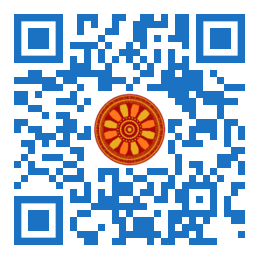
:: International Transaction Journal of Engineering, Management, & Applied Sciences & Technologies
http://TuEngr.com

ISSN 2228-9860
eISSN 1906-9642
CODEN: ITJEA8
FEATURE PEER-REVIEWED ARTICLE
Vol.12(12) (2021) |
Pareto and Ishikawa Diagrams for Identifying the Causes of Defects in Poultry Meat
 Elena Statsenko (Department of Food Technologies and Engineering, Institute of Living Systems, North Caucasus Federal University, Stavropol, RUSSIA),
Elena Statsenko (Department of Food Technologies and Engineering, Institute of Living Systems, North Caucasus Federal University, Stavropol, RUSSIA),
Ruslan Omarov, Sergei Shlykov (Department of Production Technology and Processing of Agricultural Products, Stavropol State Agrarian University, Stavropol, RUSSIA),br> Anton Nesterenko (Department of Technology for Storage and Processing of Livestock Products, Kuban State Agrarian University named after, Krasnodar, RUSSIA),br> Oksana Konieva (Department of Agrarian Technologies and Processing of Agricultural Products, Kalmyk State University named after B.B. Gorodovikova, Elista, RUSSIA).
Disciplinary: Food Science (Food Safety, Meat Products), Veterinary and Agriculture.
doi: 10.14456/ITJEMAST.2021.241
Keywords: Statistical methods; product life cycles; cumulative curve; Pareto diagram; Quality tool; Cause-effect diagram; Pareto diagram; Poultry meat quality; Transporting poultry.
AbstractFood safety and quality are fundamental factors in production efficiency. Therefore, identifying and preventing manufacturing defects is becoming an integral part of quality management in manufacturing. Statistical control methods allow you to choose the scope and direction of quality management objectively. Thanks to statistical control methods, it is possible to identify defects in all product life cycles and, before the goods enter the market, improve quality and increase their competitiveness. The Ishikawa diagram, or cause-effect diagram, allows you to link problems to potential causes of errors and depict this relationship graphically. A Pareto diagram is a tool that will enable distributing efforts to resolve emerging issues and identify the main reasons to start acting. Using both diagrams made it possible to explain the leading causes of defects encountered and develop recommendations for reducing rejects and improving the quality of products.Paper ID: 12A12J
Cite this article:
Statsenko, E., Omarov, R., Shlykov, S., Nesterenko, A. and Konieva, O. (2021). Pareto and Ishikawa Diagrams for Identifying the Causes of Defects in Poultry Meat. International Transaction Journal of Engineering, Management, & Applied Sciences & Technologies, 12(12), 12A12J, 1-8. http://doi.org/10.14456/ITJEMAST.2021.241
References
- Amrina, U., Firmansyah, H. (2019). Analysis of Defect and Quality Improvement for O Ring Product Through Applying DMAIC Methodology. Jurnal PASTI, 13(2). DOI: 10.22441/pasti.2019.v13i2.003
- Cao, Z., Hao, J., Xing, H. (2020). Spatial-temporal change of chinese resident food consumption carbon emissions and its driving mechanism. Progress in Geography, 39(1). DOI: 10.18306/dlkxjz.2020.01.009
- de Moraes, C. C., de Oliveira Costa, F. H., Roberta Pereira, C., da Silva, A. L., Delai, I. (2020). Retail food waste: mapping causes and reduction practices. Journal of Cleaner Production. DOI: 10.1016/j.jclepro.2020.120124
- Hisprastin, Y., Musfiroh, I. (2021). Ishikawa Diagram dan. Artikel Mini Review, 6(1).
- Jesujoba, E. O., Adenike, A. A. (2021). ABC analysis and product quality of manufacturing firms in nigeria. Journal of Management Information & Decision Sciences, 24(1).
- Krehbiel, T. C. (2020). Pareto Diagrams. In The Information System Consultantís Handbook. DOI: 10.1201/9781420049107-11
- Miyagawa, Y., Adachi, S. (2019). Analysis of nonisothermal crystallization of rapeseed oil by deconvolution of differential scanning calorimetry curve. Journal of Oleo Science, 68(12). DOI: 10.5650/jos.ess19252
- Omarkhanova, Z., Amerzhanova, D., Mardenova, L., Zayakina, A., Sartova, R. (2019). Statistical methods in investment insurance. Entrepreneurship and Sustainability Issues, 7(2). DOI: 10.9770/jesi.2019.7.2(55)
- Rynkiewicz, T. N., Witkowska, A. (2019). Analysis of Impact of Ship Model Parameters on Changes of Control Quality Index in Ship Dynamic Positioning System. Polish Maritime Research, 26(1). DOI: 10.2478/pomr-2019-0001
- Vanany, I., Hua Tan, K., Siswanto, N., Arvitrida, N. I., Pahlawan, F. M. (2020). Halal six sigma framework for defects reduction. Journal of Islamic Marketing, 12(4). DOI: 10.1108/JIMA-11-2019-0232
- Vysochyna, A., Stoyanets, N., Mentel, G., Olejarz, T. (2020). Environmental determinants of a countryís food security in short-term and long-term perspectives. Sustainability, 12(10). DOI: 10.3390/su12104090
- Zheng, H., Zhang, T., Fang, C., Zeng, J., Yang, X. (2021). Design and implementation of poultry farming information management system based on cloud database. Animals, 11(3). DOI: 10.3390/ani11030900
Other issues:
Vol.12(13)(2021)
Vol.12(11)(2021)
Vol.12(10)(2021)
Archives
Call-for-Papers
Call-for-Scientific PapersCall-for-Research Papers: ITJEMAST invites you to submit high quality papers for full peer-review and possible publication in areas pertaining engineering, science, management and technology, especially interdisciplinary/cross-disciplinary/multidisciplinary subjects.
To publish your work in the next available issue, your manuscripts together with copyright transfer document signed by all authors can be submitted via email to Editor @ TuEngr.com (no space between). (please see all detail from Instructions for Authors)
Publication and peer-reviewed process:
After the peer-review process (4-10 weeks), articles will be on-line published in the available next issue. However, the International Transaction Journal of Engineering, Management, & Applied Sciences & Technologies cannot guarantee the exact publication time as the process may take longer time, subject to peer-review approval and adjustment of the submitted articles.